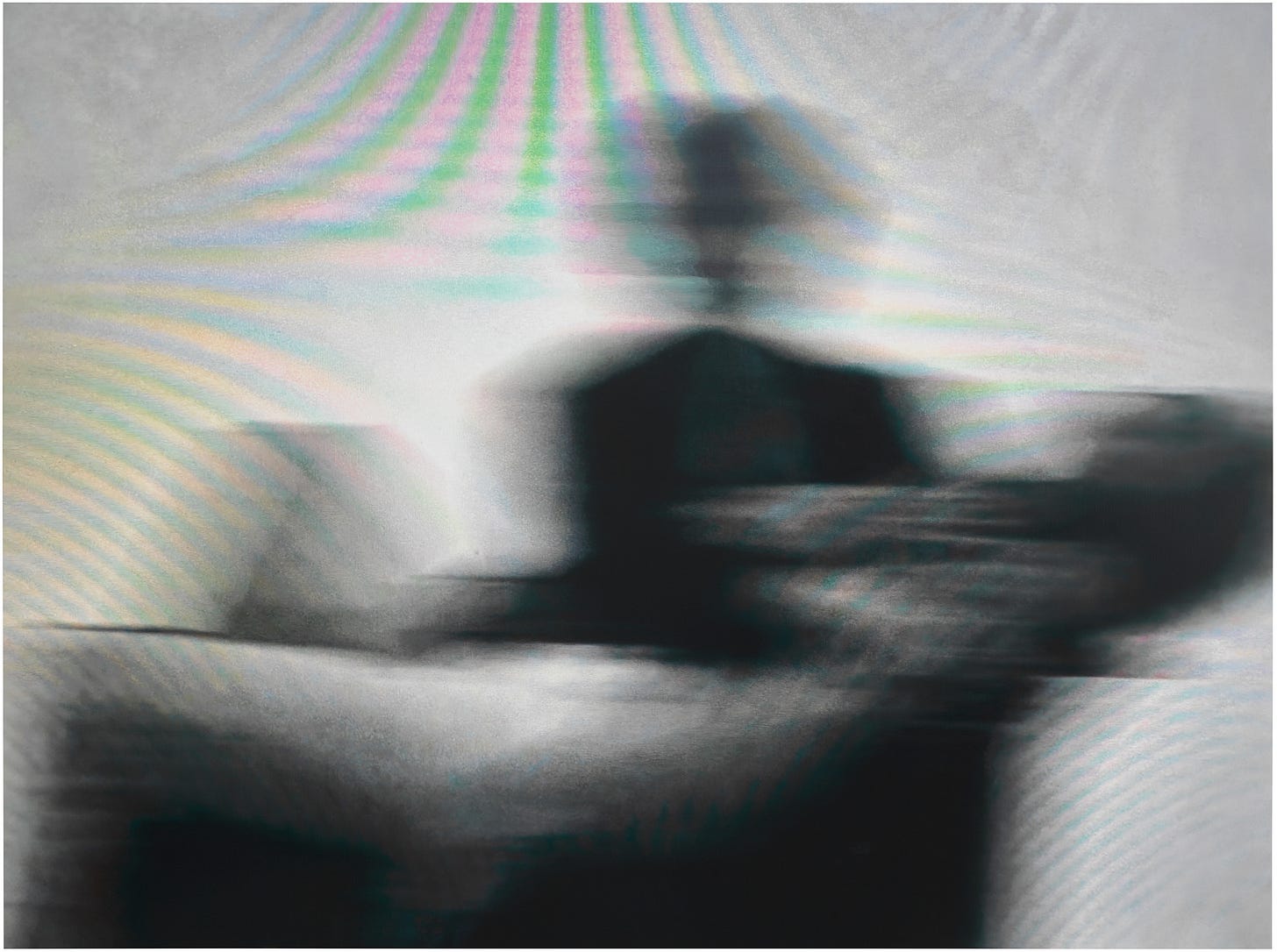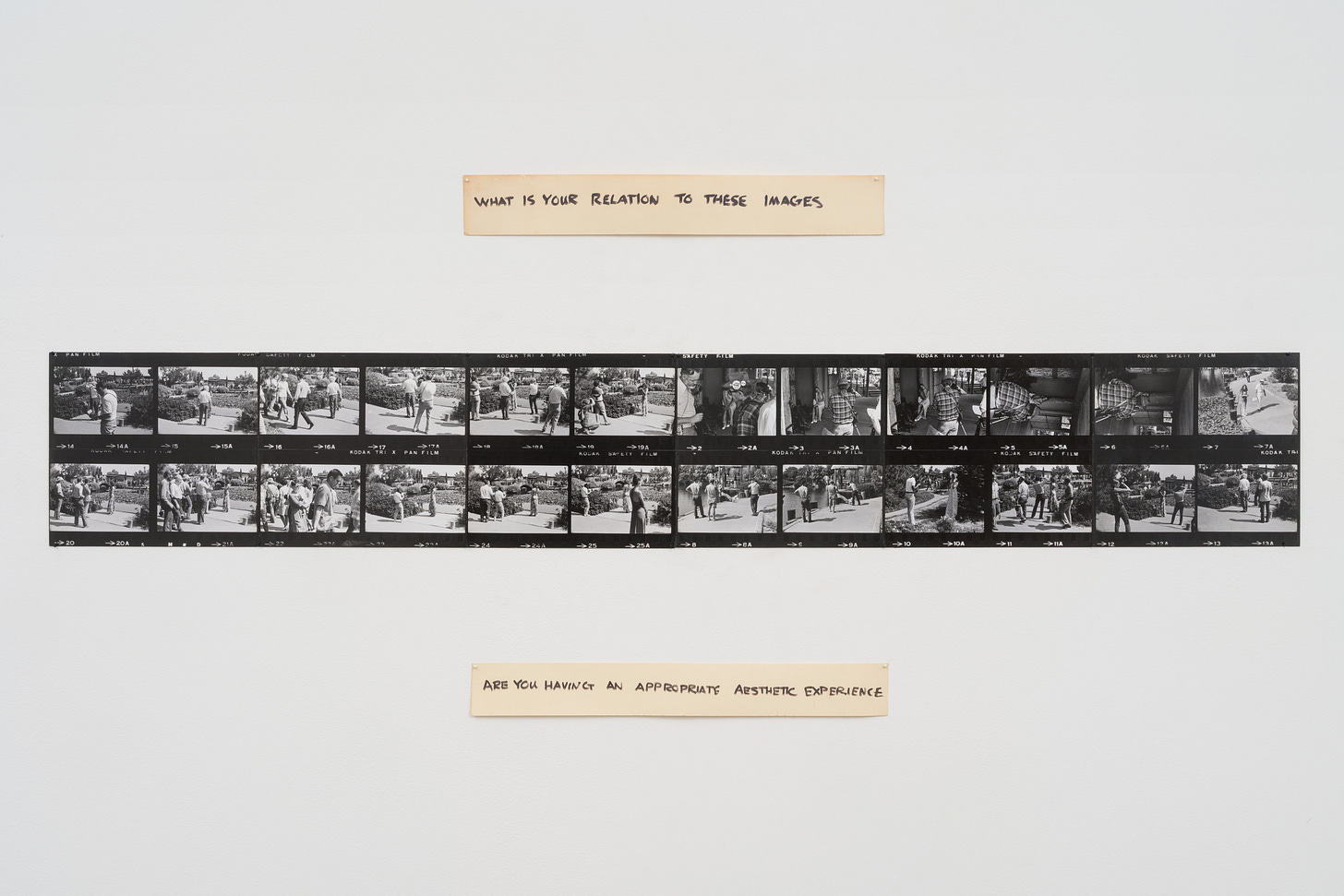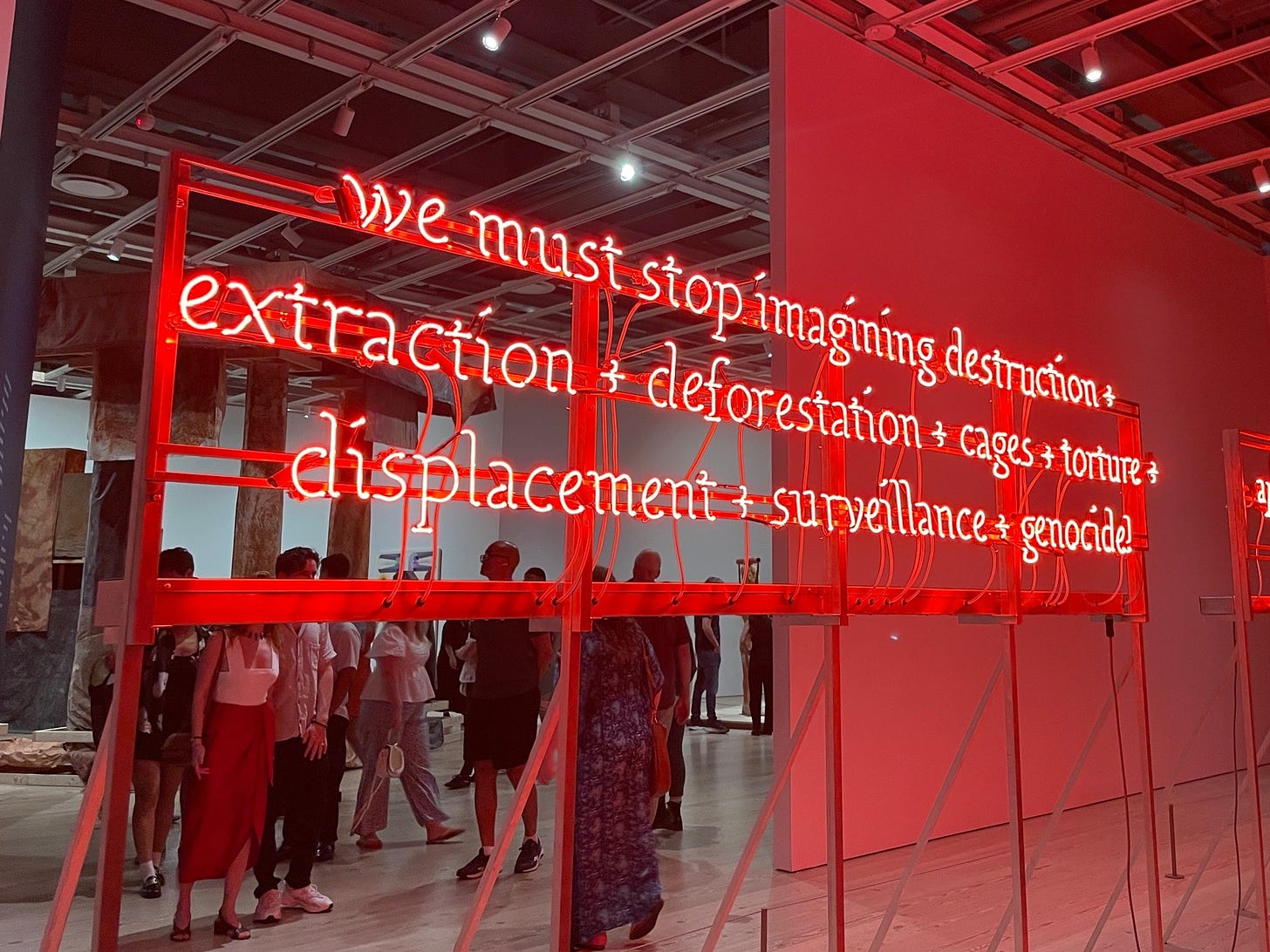Art & Recognition Part 1: Some initial thoughts on the withdrawal of recognition
Is what's missing from contemporary art our capacity to recognize it and its capacity to demand such recognition from us?
“Recognition” is a big concept, and not just for the consideration of art. But within the art world, it is rarely considered on its own terms, as an ends rather than a means, or else it is submerged within some scenario that “looks” like recognition, but which keeps our consideration of the idea, the act of recognition itself, at bay.
For example, one could take it as a given for much of the past 50 years that an artist’s having a mid-career retrospective at the Museum of Modern Art in New York City would be a pinnacle “achievement” (more on this term to come), a moment of wide if not full recognition of their talent and contribution to whatever the ongoing history or discourse of art might be. But what really motivates this scenario, at least in the artist’s mind? Is it the idea of the sheer number of people who will see the artist’s work? A kind of leap in the game of familiarity and “name recognition” which is tantamount to a kind of celebrity? Or is it that MoMA’s own history as a taste-making and agenda-setting, not to mention history-writing, institution confers on the artist an imprimatur that belongs to only a select few? It’s a small club of artists who have had their names in MoMA’s lights so to speak, and that means something, both to those who know what that feels like as much as to those who don’t (and might only hope for it). Or is it that this fact of exclusivity and the imprimatur will catch and perhaps hold the attention of other talents, other artists or intellectuals or VIPs, who now make up a bigger and yet still exclusive club of “importance,” which holds new opportunities as much as it might be its own kind of satisfaction? (In this case, the author list of the exhibition’s catalogue marks out the “intellectual” pole of such importance while the celebratory dinner invite list marks out the “social” one, or something like it.) Of course, it is presumed that one could always add to these motivations the prospect of more money coming in from the increase in value of the artist’s work — more “comfort” or “security” or more “resources” for whatever reason the artist might want to apply them. Surely it is some mixture of any and all of these motivations that will, in the end, be offered up as satisfactions for why the MoMA show is the achievement that it is.
To all of these dimensions of the “mid-career show at MoMA” scenario though — or really any scenario like it, up and down the ladder of prestige and attention — there is a question that rarely seems to get asked in any sustained or serious manner, and that question is: Why? Why are any of these motivations as such?
I have often tried to get to the root of this “why” question with artists by asking the following: Let’s say you opened that show at MoMA, and after all of the festivities and the marketing and the PR, after conversations about your particular achievement, your place in the history books, the new opportunities on the horizon, after the dust has settled, so to speak, and it’s now into the middle weeks of the show, when there is little urgency for the culturati and the influencers to be on site (and to be seen to be on site) and it’s well before that last scramble by insiders and cognoscenti to manage a glimpse before its closing (so they can say, with some honesty, that they “caught” it), at this moment of a lull, you arrive early one day to the museum, perhaps for a long-overdue coffee with the curator about the show’s next venue, or some other equally tiresome bit of administration, and you wander into the galleries before heading to the cafe or the offices or wherever, and there is someone there, alone, looking at the work, really looking, taking time, considering what’s on offer in a way that shows interest, engagement, thought — and the question is: Who would you most want that person to be?
Sometimes the set up is different (it’s not MoMA, but the next gallery show; it’s not seeing someone in the galleries but getting a note, an invitation to talk privately, about the book, that article, these performances, etc.) but the target is the same. From whom do you seek recognition? And the answer to that question, perhaps a forced crystallization of the matter and perhaps not, will demand some answer to the question of “Why?”.
When really put to artists, it’s surprising how the answers can vary (without betraying too many confidences, I can say that “my mother” is the answer offered more often than not; little wonder psychoanalysis remains so popular in this field). What’s most surprising however is how few answers are actually offered. When pressed, many of the artists I have spoken to don’t have an answer, have never considered the question or anything like it, or bat it away by giving something akin to the “my mother” answer or dropping some A-lister’s name that demands little consideration on first mention but is difficult to justify after a moment’s thought (e.g. “Beyoncé”).
We often talk about “institutional recognition” and “community recognition” and “market recognition,” about attention from media, about the size of one’s follower count, but I think without some sense of the who it is that the artist sees as offering recognition of what the artist is doing, what the art is doing, then the art itself will be — for artists and their audiences alike — unfulfilling, unsatisfying, and more importantly, a failure to some extent in the project of what it is that art is meant to be as an expression or embodiment — the expression, the embodiment, I want to write — of freedom itself.1
That may sound all too high-minded, but I would suggest that its sounding that way is symptomatic of a general withdrawal of recognition — the idea of it, the import of it, the need to tarry with it — from the discourse on art.
Most historians and critics who engage seriously with the idea of art have much to say about the “market,” about its corruptions and coercions and why it is the force or condition that needs to be confronted or resisted (or assimilated if not appeased) by every artist, every work of art, if freedom is indeed what is on the line. That line of critique, the critique of art via the critique of the market, or vice versa, is an exhausted one though, which is not to say it doesn’t continue to animate or underwrite much of what continues to get written by way of art criticism and history today.2 But what I mean by “exhausted” is that it no longer appears to hold any descriptive, explanatory, or even agental force when it comes to what artists are choosing to do when they make art. This is not to say that everyone has made their peace with the market, but the politics of representation have shifted such that art’s commodity-cum-asset status is today a means to be exploited, capitalized, used, played — even enjoyed? — rather than an ends to be endlessly critiqued, resisted, overthrown or outrun.3
Politics, then, remains a concern and interest of much art today. Whether its of the identity form, or the institutional form, or the academic-departmental form, or the actually-existing governmental form (the kind with guns), there is nothing outside (of) politics, and so the question of art and politics, of the relation of one to the other, becomes simply one of position and positioning: where are you on the board, in the matrix, on the spectrum? I would argue that this is really an activity of identification, and not of recognition. The work of art might be “understood,” the way a message or a signal is, but it’s not recognized when only “read” in terms of one message or another, one messenger or another. That understanding then becomes a mere act of selection — I agree with this message; not that one — which is why it fits so well the rise of the “curatorial,” with its binary of inclusion/exclusion, a hallmark of algorithmic thought.
It’s hardly controversial to point out that what gets called “politicization” (and it’s close cousin, “polarization”) has been responsible for a general loss of faith in the awards, the prizes, the selection committees, the accolades, the credentials, and all of the more general accoutrements that once afforded us some conviction in who and what was to be, deserved to be, recognized. Over the past decade one could point to, for example, the controversy surrounding PEN America’s awarding the satirical magazine Charlie Hebdo it’s Freedom of Expression award in 2015; the #OscarsSoWhite campaign, also beginning in 2015; the refusal of the nominees of the 2019 Turner Prize to accept a single winner; the Booker Prize naming two winners in 2019; the controversy surrounding the 2020 Pulitzer Prize in Journalism going to The 1619 Project; the resignations and reconstitutions of the Documenta 15 and 16 selection committees in 2023 and 2024. These are only a handful of the most high-profile instances in which politics of one sort or another were seen to undermine whatever autonomy, if not authority, such recognitions require in order to function as the recognitions that they are. It does not matter which “side” of these debates you found yourself on, because if there are sides at all, then recognition — in its full and free sense — has been withdrawn.
And so: not the market, not politics, but recognition — recognition as the wellspring of art, which is also the wellspring of freedom, of a free life. To signal the direction a return to recognition must travel:
[A]nyone committed to such an ideal [of a free life], anyone who takes seriously the historical novelty of the idea and the burden that novelty places on philosophy [and on art], anyone convinced that, on the one hand many modern notions of autonomy are wild exaggerations and on the other hand that the endless “decenterings” of the “authority of the subject” have gone much too far, have ended up undermining the possibility of their own projects, anyone suspicious that we won't have much of a sense of what the ideal has come to mean without lots of interpretive work in understanding cultural objects not traditionally taken to be the province of philosophy, and anyone convinced that the aspiration to lead a life of one's own in common with others, in the social and material conditions under which such equal dignity is actually possible, is a major accomplishment of modernity and not an ideologically distorted fantasy, will find herself at some point led back to Hegel and to the question of the continuation of Hegel's project.4
If you read the name “Hegel” and find yourself already bored, exhausted or even merely bemused, know that I do as well. But if recognition matters to the idea of a free life, to the idea of freedom, which is the idea at the core of what art is, or must be, today, in our modernity (late though it may be; and maybe less free than it once was) then Hegel’s is the thinking (not the only thinking) through which one must pass, with which one must contend, whether you recognize it or not.
This isn’t the moment to begin a full inquiry into Hegel’s thinking on recognition (that’s to come), but a few preliminaries on why such an inquiry is currently relevant: First, the continuing echo of periodization, claims that one idea about, or history of, art is “past” and that another has begun or is just in the offing, is Hegelian through and through. To speak of “ends,” the “end of painting,” for example, or the “end of art” or, to widen the aperture, the “end of history,” even the “end of temporality” as such, has been common enough over the past fifty years. But today the talk of such ends has returned, not just within the domain of culture, but also and more saliently within that broader social and political conversation that, once declaiming the ravages of “neoliberalism,” now finds itself debating the legacy and future, that is to say the “end,” of “liberalism” itself.
Second, and relatedly, after the ideological overreach of progressive identitarianism over the past decade, we are witness to a similar if not exact mirror reflection of that identitarianism coming from the right, one that is nowhere more evident than in what one commentator has called the “kulturkampf on the Potomac.”5 The Trump administration’s strong-arming of U.S. cultural institutions under the banner of “anti-Woke” programming and policies, crystallized by Trump’s purge of the Kennedy Center for the Performing Art’s board and his subsequent election to that board’s chair, is cause for concern. We are a long ways off from artists finding themselves thrown in jail for their creative work (though Rümeysa Öztürk, the Turkish graduate student whose pro-Palestinian Op-Ed for the Tufts university newspaper led to her detention by ICE, is a worringly cautionary tale). The airwaves of social media are awash with anti-Trump advocacy and criticism and memes, and there is no equivalent Red-Scare-era black-listing going on.6
But with such expressive freedoms facing a non-zero chance of being curtailed more broadly, one could do worse than turn to the philosophies, Hegel’s preeminent among them, which sought to understand that freedom as an achievement of, at once, the individual and her social milieu: institutions — familial, academic, legal, economic, civic — the rational functioning of which are integral for anything like really existing individual freedom to gain its actuality, let alone its coherence. Even if one thought many such institutions were due for an overhaul, how those institutions transform — at the hands of the State or at the hands of the people — will have significant effects on how individuals see themselves, and others — recognize themselves and others — as free. The institutions of culture are no exception.
Hegel is the philosopher of recognition bar none. In the wake of a contemporary social and cultural arrangement during which identity and identification became paramount, we could do worse than return to thinking about the dynamics of recognition and how they might function today — as they have always functioned in the modern period — to secure the advance, and not the withdrawal, of freedom, in art if not in politics.
To very clear, this is not an obviously self-interested argument for criticism or critics; though criticism is one avenue or medium of recognition, it’s not the path to full and free recognition understood as mutual, the “mutuality of recognition.” More on this in subsequent posts.
I hesitate to call this the Marxist critique, but it is, in broad terms, just that.
One theory for why this is the case has to do with the broad expansion of people who are making a go at being artists today, which is of a piece with contemporary art’s (its market and visibility and discourse and institutional structures of patronage and support’s) globalization and professionalization. The general trend toward a more “inclusive” artworld, which holds out some possibility of middle-class attainments means that the elite rejection of bourgeois taste and mores that went hand-in-hand with the modern era could no longer hold (i.e. it’s not just for the trust-fund kids anymore). Art would now have to be a means of making a living, and thus the market had to be entertained, if not embraced, as the place where that living could be secured.
So closes Robert Pippin’s Hegel’s Practical Philosophy: Rational Agency as Ethical Life (Cambridge University Press, 2008).
That commenter is Leon Wieseltier in the Summer 2025 issue of Liberties (not yet online as of this writing).
It may be objected that this is just what the “cancel culture” of the 2012-2022 period was, and I do not want to discount the myriad stories of average people finding themselves subjected to online mobs, HR struggle sessions, or outright social and professional ostracisms at the hands of the righteous. All of that was and is contemptible, contemptible because highly illiberal. But it was not a Maoist cultural revolution, anymore than what we see today is a Stalinist authoritarian takeover of the means of cultural production.





